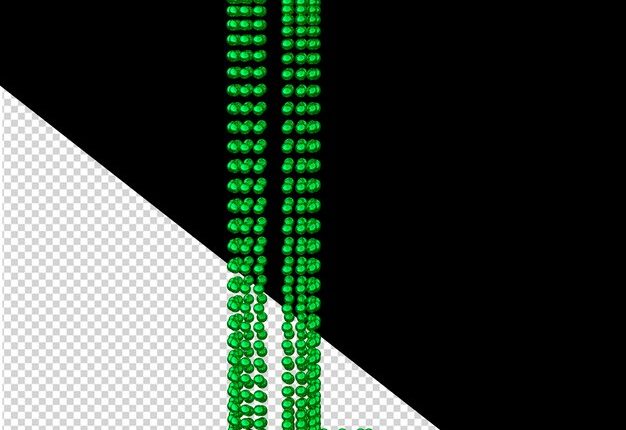In a groundbreaking study titled “TLK1>Nek1 Axis Promotes Nuclear Retention and Activation of YAP with Implications for Castration-Resistant Prostate Cancer,” researchers Damilola Olatunde and Arrigo De Benedetti dive deep into the mechanisms that drive the progression of castration-resistant prostate cancer (CRPC), focusing on the TLK1>Nek1 Axis YAP pathway. The study explores how the phosphorylation and activation of YAP, a transcriptional co-activator, through the TLK1>Nek1 axis contribute significantly to the disease’s resistance to current therapies. By analyzing the interaction and regulation of YAP within the nucleus, the authors uncover how critical the phosphorylation of YAP at Y407 is for its nuclear retention and its synergistic effect with androgen receptor (AR) and TEAD1 co-activators. The groundbreaking findings suggest that inhibiting TLK1 with compound J54 can reverse these effects, potentially leading to improved therapeutic strategies. Furthermore, this inhibition not only impacts YAP’s post-translational modifications and spatial cellular distribution but also significantly affects gene expression patterns linked to prostate cancer virulence. The research holds promising implications for better understanding CRPC’s biology and devising more effective treatments, providing a pivotal foundation for future investigations into this challenging disease landscape.
In the realm of oncology research, castration-resistant prostate cancer (CRPC) poses significant challenges due to its ability to thrive even after the depletion of androgen levels, which are typically instrumental in the growth of prostate cancer cells. This type of prostate cancer not only progresses despite androgen deprivation therapy but also exhibits a high propensity for metastasis and resistance to current treatment modalities. One crucial pathway that has come under scrutiny in the search for more effective CRPC therapies is the ‘TLK1 Nek1 Axis YAP’ pathway. Recent studies have increasingly pointed to the involvement of the Yes-associated protein (YAP) in various cancerous processes, marking it as a pivotal player in tumor cell proliferation and survival.
YAP, a well-known effector of the Hippo pathway, traditionally regulates organ size and tissue homeostasis by modulating cell proliferation and apoptosis. In the context of cancer, especially CRPC, YAP functions diverge from its typical roles; rather than merely contributing to size and homeostasis, YAP becomes a pro-tumorigenic factor that drives cancer cell survival and proliferation under castrated conditions. Previous studies have shown that YAP can translocate to the nucleus and, when not appropriately regulated, can lead to the transcriptional activation of genes that promote tumorigenesis.
The study by Damilola Olatunde and Arrigo De Benedetti provides profound insights into the specific interactions and mechanisms underpinning YAP’s role in CRPC. By concentrating on the ‘TLK1 Nek1 Axis YAP’ pathway, their research elucidates how Tousled-like kinase 1 (TLK1) and Never in mitosis gene a-related kinase 1 (Nek1) orchestrate the activation and nuclear retention of YAP. Notably, phosophorylation at Y407 on YAP – a modification enabled through the TLK1>Nek1 axis – is a critical step that enhances YAP’s interaction with key nuclear elements such as the androgen receptor (AR) and TEAD1, a transcriptional enhancer. These interactions underscore the importance of YAP in sustaining the malignant phenotype of CRPC cells, particularly its capability to drive gene expression patterns that correlate with aggressive disease and therapy resistance.
The exploration into the modulation of YAP activity by the TLK1 Nek1 Axis provides a tantalizing glimpse at potential therapeutic targets. By demonstrating that inhibition of TLK1 with the experimental compound J54 can alter the phosphorylation status of YAP, thereby affecting its nuclear retention and overall tumor-promoting activities, the study paves the way for novel treatment avenues. These findings not only enrich our understanding of the molecular underpinnings of CRPC but also highlight the TLK1 Nek1 Axis YAP as a promising target for therapeutic intervention, setting the stage for future clinical applications that might one day significantly improve the prognosis for patients battling this relentless form of prostate cancer.
The research conducted by Damilola Olatunde and Arrigo De Benedetti employed a multifaceted approach to explore the role of the TLK1 Nek1 Axis YAP pathway in castration-resistant prostate cancer (CRPC). The methodology utilized in this study was comprehensive, incorporating various experimental techniques to dissect the mechanisms by which this axis influences the activity and localization of the Yes-associated protein (YAP) in the context of CRPC.
**Cell Culture and Treatment:**
The first step in their experimental design involved culturing CRPC cell lines under conditions that mimic the low androgen environment characteristic of castration-resistance. These cell lines were then treated with the compound J54, a novel inhibitor designed to target TLK1, to assess its impact on YAP activity and localization. This phase was crucial for establishing the baseline effects of TLK1 inhibition on YAP-driven processes.
**Protein Analysis:**
To directly measure the impact of TLK1 Nek1 Axis YAP on YAP phosphorylation, Western blotting techniques were employed. The researchers specifically probed for phosphorylation at the Y407 site on YAP, a modification hypothesized to be pivotal for its nuclear retention and activity. This technique provided quantitative data on the extent of YAP phosphorylation in response to TLK1 inhibition by J54.
**Immunofluorescence and Confocal Microscopy:**
To visualize the cellular localization of YAP, the team used immunofluorescence staining coupled with confocal microscopy. This method allowed for the observation of YAP’s nuclear versus cytoplasmic distribution before and after treatment with J54. By comparing these patterns, insights into how TLK1 inhibition affects YAP’s ability to enter and remain in the nucleus were obtained, which is critical for its role as a transcriptional regulator in CRPC.
**Gene Expression Analysis:**
Through real-time PCR and RNA sequencing, changes in gene expression profiles induced by alterations in the TLK1 Nek1 Axis YAP pathway were analyzed. These techniques helped identify which cancer-promoting genes are under the regulatory control of nuclear YAP when it is phosphorylated via the TLK1>Nek1 axis. Tracking these changes was essential for establishing a link between TLK1>Nek1-mediated YAP activation and CRPC progression.
**Co-immunoprecipitation:**
To further explore the interaction between YAP and its nuclear partners, particularly the androgen receptor (AR) and TEAD1, co-immunoprecipitation assays were carried out. These experiments helped confirm that phosphorylation of YAP at Y407 enhances its binding affinity for these crucial transcriptional co-activators, thereby potentiating its effect on the transcription of target genes involved in tumor aggressiveness and resistance to therapy.
This rigorous methodological framework provided a detailed understanding of how the TLK1 Nek1 Axis YAP modulates YAP’s role in CRPC, offering potent insights into potential therapeutic strategies. The study leverages these methods to paint a broader picture of potential intervention points that could disrupt CRPC progression, setting a foundational platform for future clinical research in this challenging area of oncology.
The study undertaken by Damilola Olatunde and Arrigo De Benedetti on the “TLK1 Nek1 Axis YAP” pathway in castration-resistant prostate cancer (CRPC) unearthed several pivotal findings, offering new insights into the molecular drivers of this aggressive cancer form. Their research revealed that TLK1 (Tousled-like kinase 1) and Nek1 (Never in mitosis gene a-related kinase 1) profoundly influence the activity and nuclear retention of the Yes-associated protein (YAP), a known transcriptional co-activator implicated in numerous cancers. TLK1 and Nek1 were found to orchestrate the phosphorylation of YAP at the critical Y407 site, a modification that significantly dictates its nuclear localization and activation.
The most significant aspect of their findings centers around the impact of phosphorylation on YAP’s interaction with key nuclear proteins such as the androgen receptor (AR) and TEAD1, a transcriptional enhancer. Phosphorylation at Y407 not only enhances YAP’s retention in the nucleus but also boosts its ability to co-activate AR and TEAD1, thereby promoting the transcription of genes that drive tumorigenesis and therapy resistance in CRPC. Essentially, the “TLK1 Nek1 Axis YAP” pathway acts as a critical enhancer of YAP’s pro-tumorigenic functions in the castration-resistant setting, underlining the pathway’s role in sustaining cancer cell survival and proliferation despite androgen deprivation.
Furthermore, the application of the experimental compound J54, which targets TLK1, produced a notable shift in this signaling dynamics. Inhibition of TLK1 by J54 led to a decrease in YAP phosphorylation at Y407, culminating in reduced nuclear retention and transcriptional activity of YAP. This finding is revolutionary as it points toward a feasible mechanism through which the modulation of YAP activity via TLK1 inhibition can dampen the aggressive behavior of CRPC cells. The reduction in nuclear YAP activity following TLK1 inhibition was correlated with changes in gene expression patterns associated with CRPC virulence, suggesting a direct link between the “TLK1 Nek1 Axis YAP” pathway and the transcriptional networks driving CRPC progression.
In their methodical exploration of the TLK1 Nek1 Axis, the researchers utilized an array of cutting-edge techniques including Western blotting, immunofluorescence, confocal microscopy, real-time PCR, RNA sequencing, and co-immunoprecipitation. These methodologies not only confirmed the role of TLK1 and Nek1 in regulating YAP’s phosphorylation and nuclear localization but also clarified how these molecular interactions contribute to the phenotype of CRPC cells.
In summary, the research on the “TLK1 Nek1 Axis YAP” by Olatunde and De Benedetti illuminates a crucial molecular axis that could serve as a promising target for therapeutic intervention in CRPC. By delineating how this axis modulates key processes such as phosphorylation, nuclear retention, and transcriptional co-activation, the study presents a robust scientific foundation on which future therapies could be developed to combat this challenging form of prostate cancer. The implications of these findings thus not only enrich our understanding of CRPC’s biology but also pave the way for potentially transformative treatments aimed at interfering with key components of the “TLK1 Nek1 Axis YAP” pathway.
The study conducted by Damilola Olatunde and Arrigo De Benedetti on the TLK1 Nek1 Axis YAP pathway in castration-resistant prostate cancer (CRPC) provides seminal insights that could revolutionize the approach to treating this formidable disease. By elucidating the complex molecular interplay between TLK1, Nek1, and YAP, and the pivotal role this axis plays in driving the aggressive nature of CRPC, their research opens up new avenues for targeted therapies that could potentially inhibit or even reverse the progression of CRPC.
Future directions stemming from this research should ideally focus on several key areas. Firstly, extending the findings from in vitro models to in vivo settings will be crucial. Animal models mimicking CRPC should be employed to evaluate the effectiveness and safety of the TLK1 inhibitor J54 in a systemic biological context. Understanding the pharmacokinetics, pharmacodynamics, and potential side effects of J54 in living organisms will provide essential data for advancing to clinical trials.
Additionally, since the TLK1 Nek1 Axis YAP pathway implicates multiple components of cell signaling, exploring combination therapies could be beneficial. For instance, combining TLK1 inhibitors with existing CRPC treatments, like androgen deprivation therapy or chemotherapeutics, might enhance therapeutic outcomes and prevent or delay resistance mechanisms. Such combination strategies should be rigorously tested for synergistic effects and possible antagonistic interactions.
Exploration into personalized medicine, particularly the identification of biomarkers associated with the TLK1 Nek1 Axis YAP pathway, could lead to more targeted and effective treatments. Patients with CRPC exhibiting high levels of YAP phosphorylation or those who overexpress TLK1 might benefit most from treatments targeting this axis. Developing diagnostic tools to quickly and accurately identify these patients can facilitate more personalized therapeutic approaches.
Moreover, considering the complexity of CRPC’s resistance mechanisms, a deeper investigation into the molecular mechanisms that regulate the interaction between YAP and other transcription factors or co-activators within the nucleus, under the influence of the TLK1 and Nek1, would be immensely valuable. Such detailed molecular insights could potentially reveal additional therapeutic targets within or parallel to the TLK1 Nek1 Axis YAP pathway.
In summary, the compelling results generated by Olatunde and De Benedetti have not only emphasized the importance of the TLK1 Nek1 Axis YAP in the pathology of CRPC but have also highlighted its potential as a target for innovative therapeutic interventions. A concerted effort to push this research from bench to bedside, through careful preclinical and clinical studies, could one day transform the prognosis for patients battling this relentless form of prostate cancer. Thus, the TLK1 Nek1 Axis YAP remains a promising research and therapeutic frontier in the ongoing war against castration-resistant prostate cancer, holding the potential to curb one of the most lethal aspects of this disease.








